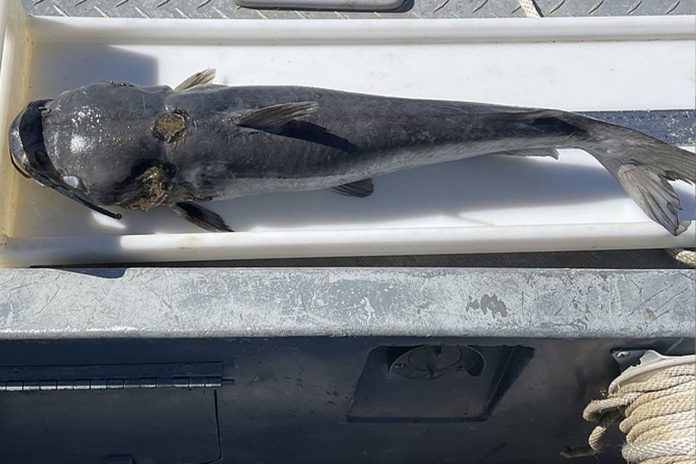Late last week, the Tennessee Wildlife Resources Agency (TWRA) responded to reports of large numbers of dead catfish floating near a damn on Chickamauga Lake, a 36,000-acre reservoir northeast of Chattanooga. After combing a 32-mile stretch of shoreline, TWRA officials said they found approximately 300 dead channel catfish averaging just over a pound in weight. Due to advanced decomposition, the TWRA employees declined to collect samples, a recent press release states, and the cause of death has yet to be determined.
According to the TWRA, the largest concentration of dead catfish was found near the Chickamauga Dam—a 129-foot structure that provides hydroelectric power to the city of Chattanooga. In the press release, the agency said that all of the catfish died at the same time, and there were no obvious signs of disease or trauma.
While TWRA biologists are still investigating the case, they believe that the die-off discovered over the weekend was an isolated event. And because it was limited to just one species of fish, they’ve officially ruled out chemicals, viruses, and bacterial sources as potential causes of death. “This sounds like a large number, but in the biological world, it isn’t,” said Bobby Brown, the state’s Aquatic Habitat Protection Biologist. “There are several clues that allow us to know this incident is not due to chemicals, bacteria, or a virus.”
Richard Simms is a catfish guide on Chickamauga Lake and other waterways around Chattanooga who reported the die-off to the TWRA. He tells Field & Stream that the total number of dead channel catfish is likely far larger than the 300 or so counted by TWRA agents. He also questions the agency’s assertion that the die-off was not related to a bacterial infection of some kind.
Read Next: Debris from California Wildfire Causes Massive Fish Kill on the Klamath River
“There are credible reports from other states of a bacterial infection known as columnaris, which can be specific to channel catfish. For whatever reason, they’re highly susceptible to it,” Simms says. “Even if that’s it, there’s nothing anybody can do about it. People do need to be concerned and report incidents to the officials, the situation needs to be monitored. But there’s no need to panic.”








